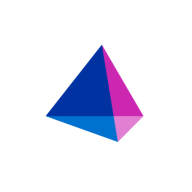


SailPoint Identity Security Cloud and JumpCloud compete in the identity management category. SailPoint holds an advantage in governance and extensive integrations, while JumpCloud offers stronger multi-platform support with user-friendly features.
Features: SailPoint Identity Security Cloud integrates with multiple systems, offering robust provisioning features, strong access management, and comprehensive compliance. JumpCloud is praised for its cloud-based architecture, single sign-on (SSO), and device management capabilities, making it user-friendly and manageable.
Room for Improvement: SailPoint is criticized for high costs, complexity in provisioning, and the need for improved automation and reporting. JumpCloud could benefit from better integration with diverse cloud services, expanded device support, and enhanced storage.
Ease of Deployment and Customer Service: SailPoint supports both on-premises and cloud deployments but receives mixed reviews on support responsiveness. It has effective account management. JumpCloud focuses on cloud deployments, valued for being straightforward and manageable, with cloud-focused, responsive customer service.
Pricing and ROI: SailPoint is perceived as expensive with additional integration costs, though it improves compliance and governance, offering ROI. JumpCloud has transparent, reasonable pricing for small to medium-sized businesses, with flexibility in tiered pricing. Both enhance security and reduce manual work, benefiting different business types.
We do not contact their technical support directly because we have a service agreement already in place with them with some dedicated and some non-dedicated resources.
first-level support lacks expertise
I have not needed to contact JumpCloud's technical support since the setup and usage are quite straightforward and well-documented.
SailPoint's team consists of specialists who handle tickets without needing to depend on other teams.
Sometimes, the support is slow, and they often suggest resorting to expert services.
Technical support is very good.
The scalability of Omada Identity is excellent; they offer flexible pricing for licenses, accommodating both full accounts and lighter identities, which makes it truly scalable.
With AWS SSO, it is ten out of ten.
The solution scales well as long as we provide the necessary resources.
The solution is scalable and can be upgraded to accommodate increased user counts.
SailPoint is scalable, though challenges exist in terms of workflow and user interface design.
In terms of stability, I rate Omada Identity a nine out of ten.
I rate the stability of JumpCloud ten out of ten.
IdentityIQ deserves a rating of 12 out of ten for stability.
The version I use now is very stable, especially compared to previous versions like eight point zero and eight point one.
The biggest issue, which is the reason why we are transitioning from their product to SailPoint, is the overall user experience.
There is room for improvement in Omada Identity, primarily in customization for administrators; many custom tasks require contacting providers even for simple changes.
This would be helpful, especially for AWS users, by providing broader support for different cloud platforms and private cloud environments.
SailPoint lacks some features like privileged account management and access management features found in products like Okta.
I find raising a ticket to be too complex, which could be improved for better user-friendliness.
We have also put our enhancement request, and the SailPoint team has accepted that the feature is not available and plans to include it going forward.
They are lower than some of their competitors.
the product itself is said to have a good price, although the support can be expensive.
AWS charges per user, which can be costly if I have more than ten users.
SailPoint is cheaper than ServiceNow, which is very expensive.
The pricing of SailPoint could be better.
The costs are slightly higher than SailPoint IQ due to included charges for maintenance.
Omada Identity helps automate reviews of access requests and reroutes them to appropriate people, which is what it should do; it really assists in reducing the workload time.
Technically, the product does everything one would expect from an identity and access management platform.
The most impactful feature of JumpCloud is that it allows me to use one credential for all platforms or accounts, reducing the need to remember multiple credentials.
The automation of provisioning and deprovisioning, managing contractors, temporary users, and the overall automation factor is fantastic.
The solution can be customized to adapt the workflow to our industry, offering considerable flexibility.
From a project management point of view, the tool supports audit success with features to segregate permanent and contractor employees, integrate with HR systems, and indicate other sources for contractors.
| Product | Market Share (%) |
|---|---|
| SailPoint Identity Security Cloud | 18.4% |
| Omada Identity | 3.1% |
| JumpCloud | 1.1% |
| Other | 77.4% |



| Company Size | Count |
|---|---|
| Small Business | 8 |
| Midsize Enterprise | 3 |
| Large Enterprise | 41 |
| Company Size | Count |
|---|---|
| Small Business | 13 |
| Midsize Enterprise | 2 |
| Large Enterprise | 3 |
| Company Size | Count |
|---|---|
| Small Business | 22 |
| Midsize Enterprise | 8 |
| Large Enterprise | 40 |
Omada Identity is an identity governance and administration (IGA) solution designed to help organizations manage and secure digital identities and access across their IT environments. It focuses on enhancing security, compliance, and efficiency by automating identity management processes.
Omada Identity offers a robust set of features that streamline identity lifecycle management, access governance, and compliance reporting. It integrates with a wide range of IT systems, applications, and data sources, providing a centralized platform for managing user identities and access rights. The solution enables organizations to enforce security policies, ensure regulatory compliance, and reduce the risk of unauthorized access.
What are the critical features of Omada Identity?
What benefits or ROI items should users look for in the reviews when evaluating Omada Identity?
Omada Identity is widely adopted across various industries, including healthcare, finance, and manufacturing. In healthcare, it helps protect patient data and comply with regulations like HIPAA. In finance, it ensures compliance with SOX and other financial regulations. In manufacturing, it secures access to sensitive production data and intellectual property.
Pricing and licensing for Omada Identity are typically based on the number of users and the specific features required. Customer support is available through various channels, including online resources, support tickets, and professional services for implementation and customization.
In summary, Omada Identity is a comprehensive IGA solution that enhances security, compliance, and efficiency in managing digital identities and access.
JumpCloud offers efficient device management, single sign-on, and integration capabilities. It integrates seamlessly with Microsoft 365 and Google Workspace, streamlining user management across diverse environments.
JumpCloud delivers device, user, and application management across platforms like Windows, Mac, Linux, and cloud services such as AWS and Azure. Acting as a cloud-based directory, it facilitates single sign-on and identity access management, making it an attractive replacement for Active Directory and LDAP directories. Its policy management and centralized directory simplify user and device administration, offering a user-friendly interface with flexible access control and remote management. Organizations can experience streamlined onboarding and offboarding processes, robust authentication, and scalability. Despite being powerful, room for improvement is noted in alert capabilities, comprehensive MDM for Windows, multi-tenant features, and API reliability.
What are the key features of JumpCloud?Companies across industries utilize JumpCloud for comprehensive management of devices and user identities. It is especially beneficial in technology-driven sectors where centralized directory services replace traditional Active Directory and LDAP models. Organizations employing platforms like AWS and Azure find it essential for maintaining efficient and secure access management.
SailPoint Identity Security Cloud is known for its user-friendly interface, high-level automation, and a wide range of pre-built connectors, making it flexible for workflow customization and robust identity lifecycle management with AI integration.
SailPoint Identity Security Cloud provides strong security features such as provisioning and certification, enhanced by AI and machine learning. It effectively manages user access, roles, and governance across environments. The platform offers scalability, comprehensive documentation, and seamless integration with third-party solutions. Despite its high cost and complex configuration, it is designed to meet enterprise needs in application provisioning, access management, and lifecycle management. Cloud and on-premises deployments are supported.
What are the key features of SailPoint Identity Security Cloud?SailPoint Identity Security Cloud is employed across industries for application provisioning and identity access management, supporting onboarding, offboarding, and role management. It addresses the needs of cloud and on-premises environments, providing centralized control and compliance assistance for account administration in enterprises.
We monitor all Identity Management (IM) reviews to prevent fraudulent reviews and keep review quality high. We do not post reviews by company employees or direct competitors. We validate each review for authenticity via cross-reference with LinkedIn, and personal follow-up with the reviewer when necessary.